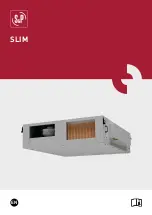
Aqua-Hot™ Hydronic Heating System Installation Manual 07/05
Page 25
3.10
Plumbing the Engine Preheat System Overview
Engine preheating is accomplished by a “Water-to-Water” Heat Exchanger that is an
integral part of the Aqua-Hot’s Heat-Tank. Adhering to the guidelines listed below will
ensure maximum engine preheating efficiency.
A. The
Supply
and
Return
ports on the vehicle’s engine should be kept as far apart as
possible. This will ensure that the entire engine is thoroughly preheated; reference
Figure 17. If assistance is needed in determining the best
Supply
and
Return
ports
for a specific engine, please contact Vehicle Systems’ Product Application Support
Department at 1-800-685-4298 or contact the specific Engine‘s Manufacturer.
NOTES:
1.
The engine’s coolant should be allowed to flow as freely as possible to maximize
the Aqua-Hot’s engine preheating system.
2.
The engine’s
Return
port returns the heated coolant to the Engine Block from
the Aqua-Hot. This port should be a
high
connection point on the Engine
Block or a suction port on the engine’s Water Pump; reference Figure 17.
3.
The engine’s
Supply
port supplies the engine’s coolant to the Aqua-Hot’s Engine
Preheat Circulation Pump. This port should be a
low
connection point on the
Engine Block or a
pressure outlet port
on the Engine’s Water Pump; reference
Figure 17.
B. Use 3/4 in. I.D. (Inside Diameter) Plumbing Lines/Automotive type Heater-Hose for
the engine preheating system.
3.11
Attaching Plumbing Lines to the Vehicle’s Engine
1. Install both engine preheat Plumbing Lines and mark with
Arrows
and/or
Labels
at
both ends. The labels should indicate whether the Plumbing Line is
supplying
coolant to the Aqua-Hot or whether it will be
returning
heated coolant to the vehicle’s
engine; reference Figures 1, 17, and 18.
NOTES:
A.
Lay both Engine Preheat Lines as flat as possible and avoid any extreme
rises in height. This will eliminate the potential for air traps.
B.
Run both Plumbing Lines in areas where they cannot be pinched off or
damaged during normal operating conditions.
C.
Be sure to secure both Plumbing Lines where necessary and apply
protective shielding in areas where chafing may occur.
D.
Vehicle Systems suggests using Rubber Coated/Closed-Type Clamps when
securing the Plumbing Lines.
2. Drain the Engine’s Coolant.
3. Remove the selected
Supply
and
Return
port “Plugs” from the engine.
Engine
Preheat
Plumbing
Overview
Installing
Engine
Preheat
Plumbing
SECTION 3: INSTALLATION PROCEDURES
















































